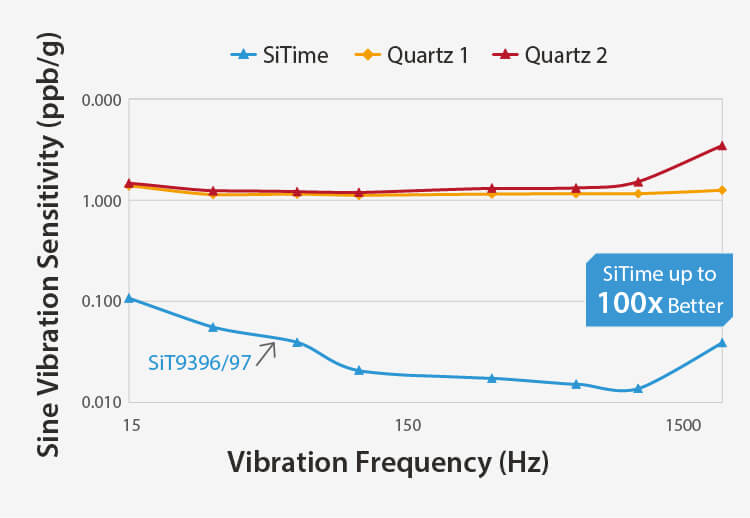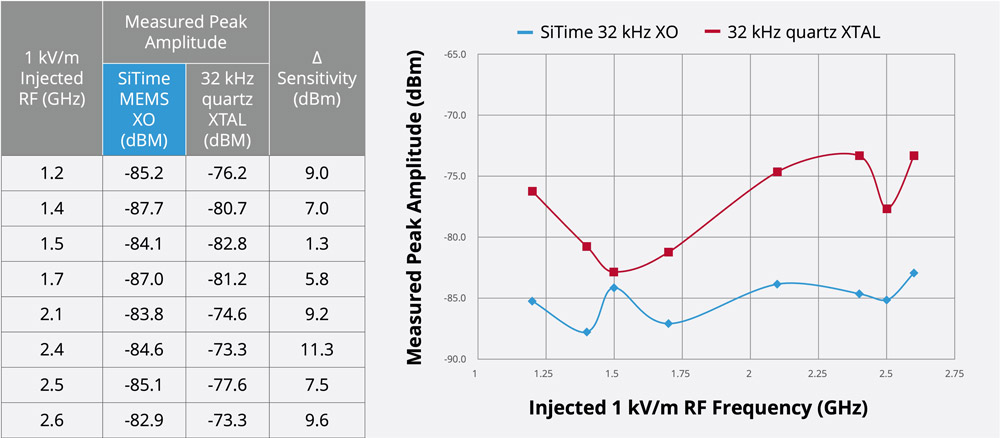
Automotive innovation is rapidly advancing, shifting toward next-generation vehicles that are not only greener, more efficient and higher performing but also safer and more reliable. Much like a human heartbeat, timing components in automotive applications ensure the reliable operation of safety-critical systems. As automotive technology has become ever-more sophisticated and interconnected, with higher levels of performance, deeper and more pervasive integrations, and is just plain smarter, the timing technology that’s helping to synchronize the massive amount of data coursing through these systems must evolve too. Relative to legacy quartz-based timing solutions, microelectromechanical systems (MEMS)-based silicon technology provides superior precision timing, supporting automotive applications so they operate reliably and safely in real-world conditions.
Enhance Automotive Reliability with MEMS Technology
Even as automotive applications advance in what they can do, automotive electronic systems must reliably operate under a wide spectrum of environmental hazards. For instance, they must be able to:
- Sustain shocks and vibrations
- Remain resilient to electromagnetic interference (EMI)
- Start up quickly even at temperatures as low as -40°C

SiTime SiT9396/97 MEMS oscillator maintains better performance under shocks and vibrations compared to quartz-based alternatives as shown in this plot demonstrating oscillator sensitivity to sinusoidal vibration.

SiTime's MEMS oscillator remains resilient to EMI compared with a quartz-based alternative. This test was performed per IEC 62132-2 standard that injects electromagnetic energy into a transverse electromagnetic (TEM) cell where the device under test (DUT) is mounted.
While quartz-based timing components have been in automotive designs for decades, advances in MEMS technology have emerged in recent years to provide a more resilient, reliable alternative to quartz. For instance, the SiTime MEMS-based oscillators consistently outperform quartz counterparts in safety-critical metrics, such as single-point failure rates or latent failure rates. MEMS oscillators consistently meet and exceed the demanding specifications of automotive applications, for example, advanced driver-assistance systems (ADAS), PCIe and SerDes high-speed communications, cameras and sensors. MEMS precision timing also plays a pivotal role in the heart of the vehicle's electronic control unit (ECU) computer domain controller. Plus, SiTime oscillators have an extremely low failure-in-time (FIT) rate of less than 0.5 compared to quartz FIT rates which can be one to two orders of magnitude higher.
Within our portfolio of precision timing solutions, MEMS oscillators are pivotal to achieving next-generation timing reliability. Made of monocrystalline silicon, SiTime MEMS resonators oscillate only in their fundamental mode. With a size of 200 μm x 200 μm, they have a 1,000x to 3,000x lower mass than a quartz resonator. Because of their small mass, they are more vibration resistant: An acceleration imposed on the MEMS structure, such as from shock or vibration, will result in much lower force and frequency shift than quartz. Operating in a hermetically sealed environment, the MEMS resonator is central to the SiTime components that support automotive reliability.
For more information on the MEMS technology behind these resonators, explore SiTime’s MEMS First™ and EpiSeal™ Processes.
Enhance Safety with MEMS Precision Timing
MEMS technology can not only enable greater reliability over legacy quartz solutions, but the reduced probability of component failure results in a lower probability metric for hardware failure (PMHF) and equates to greater safety in automotive systems and better system-level safety metrics.
The tight integration of MEMS and CMOS technology, coupled with safety mechanisms, contributes to improved single-point fault metrics (SPFM) and latent fault metric (LFM). These improvements are crucial for meeting safety standards such as ISO 26262 for automotive functional safety management. By switching from quartz to MEMS timing technology, you can enable your automotive systems with enhanced safety metrics while potentially simplifying the overall system architecture, making system-level safety assessments easier.
For more details on how MEMS technology contributes to automotive safety, visit The Future of E/E Architecture and its Impact on Clocks.
Automotive Innovation: A Matter of Timing
As we traverse the road of automotive innovation, the journey toward enhanced reliability and safety is intertwined with precision timing technology. From the hundreds of sensors to high-performance ECUs in a modern vehicle, the huge amount of data transfer at high speed is critically dependent on timing devices to ensure smooth and efficient operation, reliable performance and optimum safety. As the leader in MEMS-based precision timing solutions, SiTime is enabling the future of safer and more reliable automotive system designs. When it comes to automotive innovation, it’s very much a matter of perfect timing.
Related Blogs
Consumer Tech Enthusiasts Test Drive the Future of Automotive at CES 2024
Why Should the Automotive Industry Care About Timing?
Choosing the Right Timing Component for In-Vehicle Networking
Q&A: Piyush Sevalia Discusses the SiT9386/7 Differential Oscillators for ADAS